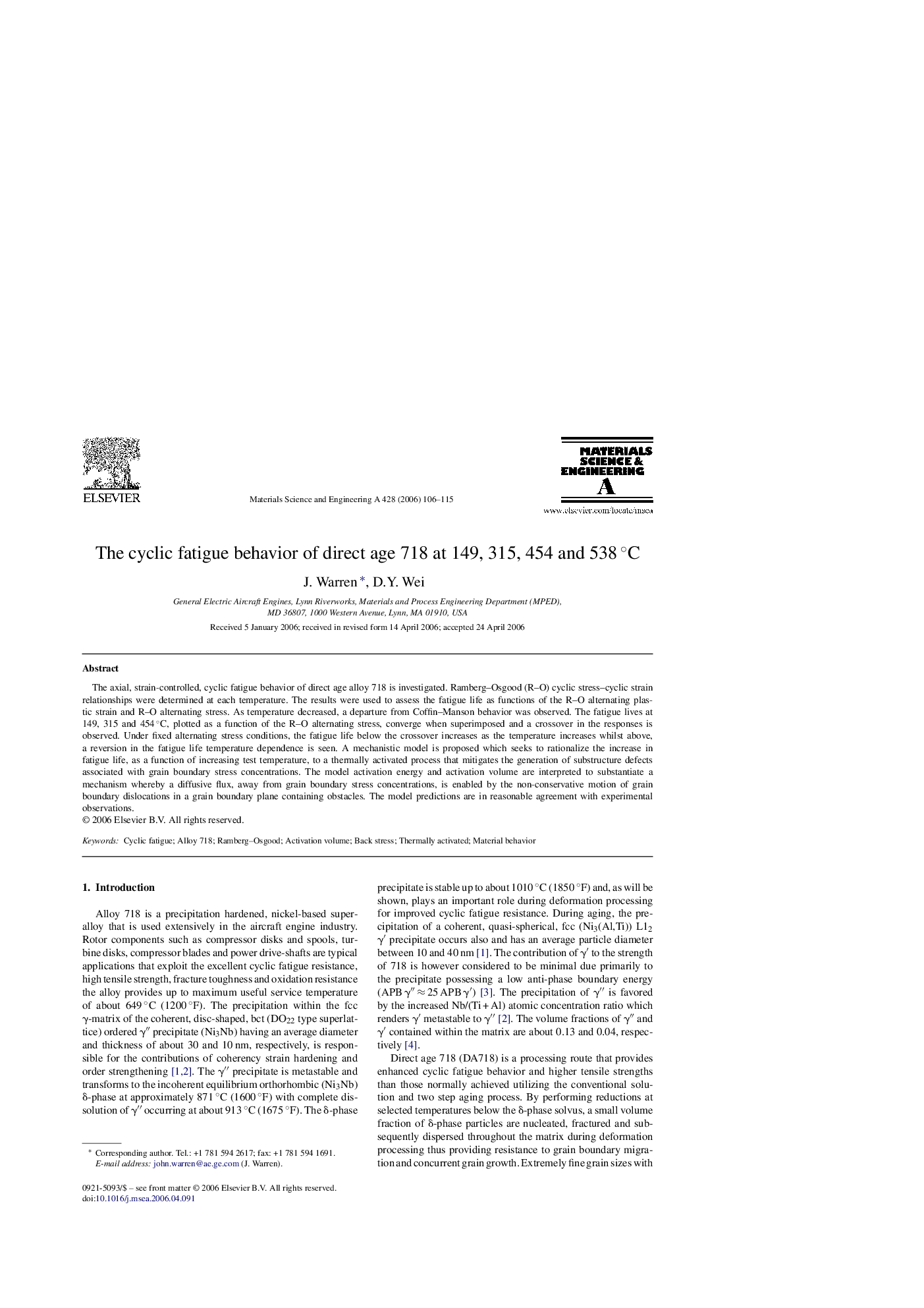| Article ID | Journal | Published Year | Pages | File Type |
|---|---|---|---|---|
| 1585533 | Materials Science and Engineering: A | 2006 | 10 Pages |
The axial, strain-controlled, cyclic fatigue behavior of direct age alloy 718 is investigated. Ramberg–Osgood (R–O) cyclic stress–cyclic strain relationships were determined at each temperature. The results were used to assess the fatigue life as functions of the R–O alternating plastic strain and R–O alternating stress. As temperature decreased, a departure from Coffin–Manson behavior was observed. The fatigue lives at 149, 315 and 454 °C, plotted as a function of the R–O alternating stress, converge when superimposed and a crossover in the responses is observed. Under fixed alternating stress conditions, the fatigue life below the crossover increases as the temperature increases whilst above, a reversion in the fatigue life temperature dependence is seen. A mechanistic model is proposed which seeks to rationalize the increase in fatigue life, as a function of increasing test temperature, to a thermally activated process that mitigates the generation of substructure defects associated with grain boundary stress concentrations. The model activation energy and activation volume are interpreted to substantiate a mechanism whereby a diffusive flux, away from grain boundary stress concentrations, is enabled by the non-conservative motion of grain boundary dislocations in a grain boundary plane containing obstacles. The model predictions are in reasonable agreement with experimental observations.
